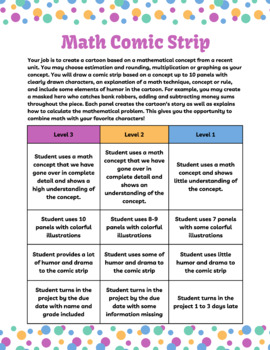Comic Strip Math
- Zip
Description
Math Comic Strip. This is an amazing homework my students complete every year. Students can be provided with this sheet that contains the directions, expectations, and rubric explaining the requirements. This simple activity has turned into a tradition in my classroom as students and parents complete it together and parents write a note along with the project talking about their experience creating the comic strip. I have created a PDF file as well as a PowerPoint presentation, therefore giving you the option to edit and change as needed. I believe that as teachers we know what is best for our students and know exactly what they need.
My main focus when sending this home is multiplication as that is an area of focus in third grade. This worksheet can be used as independent work, homework, classwork, partner work, assessment, and much more!




